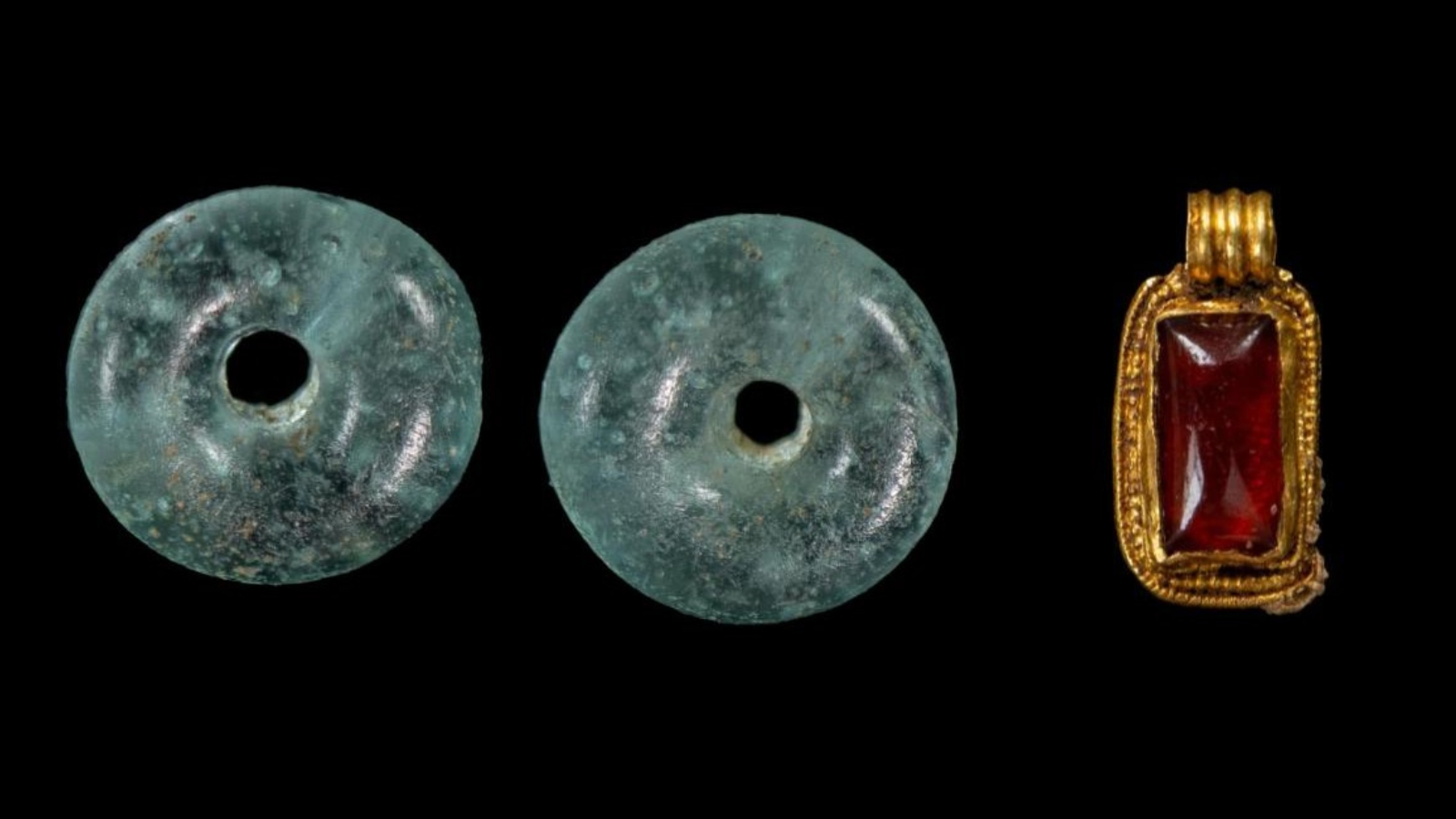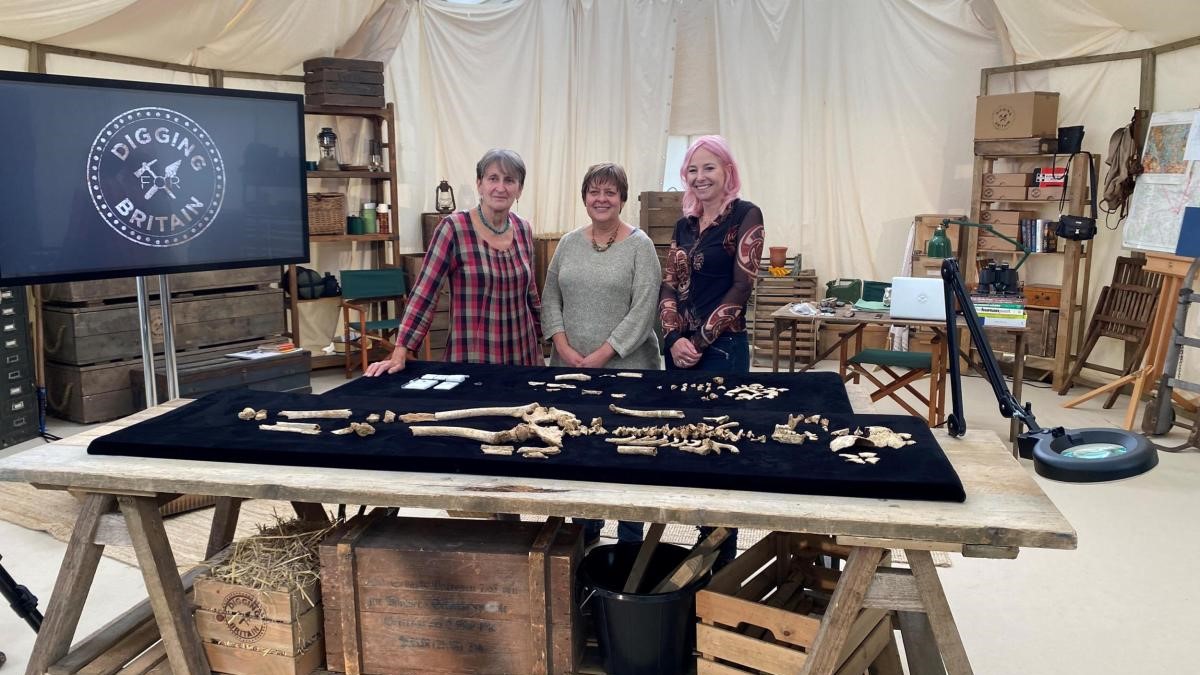
Archaeologists have unearthed a 1,400-year-old tomb holding the remains of a teenage girl and child, as well as delicate jewelry, in an Anglo-Saxon cemetery in Lincolnshire, eastern England.
The two people, whose age and relationship researchers are still untangling, were buried on their sides, with the younger child's skeleton huddled against the older girl's back. Two small gold pendants set with garnet gemstones and a delicate silver pendant with an amber mount were scattered around the teenager's head and chest bones. The grave also contained two small blue glass beads and a ring-shaped brooch.
"Although many Anglo-Saxon cemeteries are known in Lincolnshire, most were excavated decades ago when the focus was on the grave goods, not the people buried there," Jacqueline McKinley, the principal osteoarchaeologist with Wessex Archaeology — the organization excavating the cemetery — said in a statement. Osteoarchaeology is the study of human skeletons from archaeological sites.
Archaeologists have discovered the remains of over 20 people in the newly excavated cemetery, including the teenager and child. These burials yielded a range of grave goods from the sixth and seventh centuries A.D., which enabled archaeologists to date the cemetery to Britain's Anglo-Saxon period (A.D. 410 to 1066).
The roughly 650-year-long Anglo-Saxon period began when Roman legions and civilian governments withdrew from Britain, opening the floodgates for raids by Picts (northern Indigenous people) from Scotland, Scots from Ireland (until 1400, the word "Scot" meant a person from Ireland) and Anglo-Saxons from northern Germany and Scandinavia. By A.D. 500, Germanic migrants had settled in much of Britain, according to English Heritage, a charity that oversees historic English sites. The Anglo-Saxon period ended in 1066 with the Battle of Hastings, which resulted in Duke William of Normandy seizing the English throne from King Harold II.

Archaeologists recovered 250 Anglo-Saxon artifacts from the cemetery, including knives, jewelry and pottery vessels. These grave goods, and the people they were buried with, were placed on top of a circular trench dating to the Bronze Age (2300 to 800 B.C.), indicating the funerary landscape was established long before Anglo-Saxon times, according to the statement.
Research is ongoing to determine whether the teenager and child were related and reveal the economic, cultural and social factors that influenced the community buried in the cemetery.
"Excitingly, here we can employ various scientific advancements, including isotopic and DNA analyses," McKinley said. Isotopes are different versions of chemical elements that are incorporated into human tissues and leave behind evidence of a person's past geographic movements and overall health. "This will give us a far better understanding of the population, from their mobility to their genetic background and even their diet," McKinley said.
Experts are also looking for clues about this Anglo-Saxon community in the layout of the cemetery, according to the statement.







